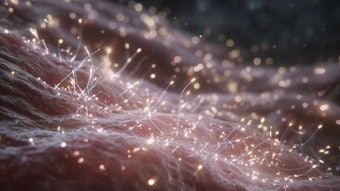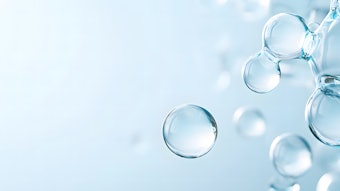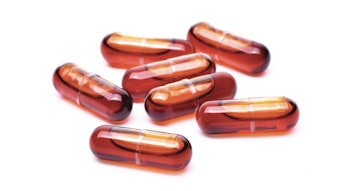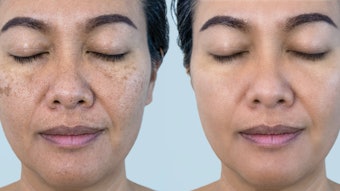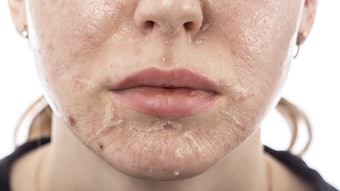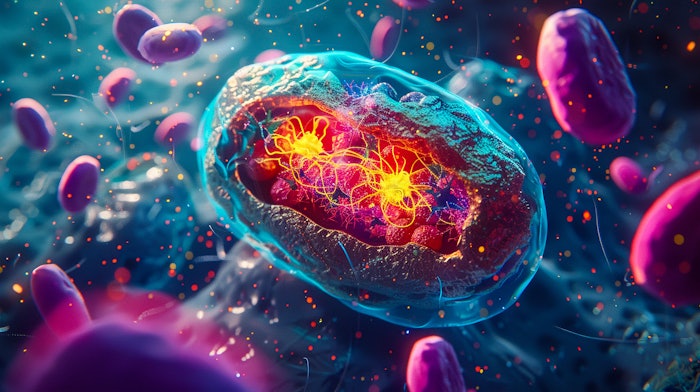
Adenosine Triphosphate (ATP) has been a buzzy word in skin care for a few years now, but before we get into what it means to anti-aging and skin care, I think we should first do a brief review of what it means to the human body and its everyday function.
Log in to view the full article
Adenosine Triphosphate (ATP) has been a buzzy word in skin care for a few years now, but before we get into what it means to anti-aging and skin care, I think we should first do a brief review of what it means to the human body and its everyday function.
How ATP Is Made
ATP is known as the "universal cellular energy currency" because quite simply it is the energy source for all living cells. Cells rely on ATP to function properly, and all living organisms need ATP to stay alive. ATP was first discovered in 1929 by Karl Lohmann when studying muscle contractions, but it wasn't until a decade later that Fritz Lipmann classified it as the energy source for all living cells.
So, how does the body make ATP and what does it use it for? When we eat food, our body turns that food into glucose. This glucose is then sent to the mitochondria in cells, which use it for energy and tap into a process known as cell respiration to convert glucose into ATP. There are different types of cell respiration and a number of details in this conversion that we won't get into in this article, but at the end of the day, the mitochondria take the glucose from food and make ATP to help power the cells.
ATP Uses In the Body
ATP has many uses in the human body. ATP helps maintain homeostasis in the human body by functioning as a neurotransmitter. ATP is a vital part of cell communication, not only from cell to cell but within the cell.
APT is secreted by cells to communicate with other cells. ATP is used to send messages within cells. It releases messengers such as reactive oxygen species, hormones, enzymes, growth factors, neturotransmitters and more to dictate the working processes of cells.
Muscles also store ATP and use it when contracting. The more physical activity you engage in, the more ATP your muscles need to function properly.
Finally, the body uses ATP to product both RNA and DNA. ATP is one of the four monomers required to make RNA. It is also used to make DNA, but is first converted to deoxyriboneucleotide dATP.
ATP In Modern Medicine
So, we all want to know how ATP can be used to create healthier and more beautiful skin, but first we should know how it is being synthesized for use in modern medicine. With ATP being such a multifunctional and vital molecule in the human body, it should come as no surprise that it can be used to treat a range of health issues in the human body.
ATP is an effective solution to controlling pain. It can be given during the time of surgery to reduce inflammation and resulting pain. It has also been shown to reduce the pain associated with allodynia and hyperalgesia conditions.
Cardiology is also a useful area for ATP treatment. ATP has shown to be an effective vasodilator in patients with pulmonary hypertension. It can also be used to prevent hypotension during surgery.
ATP In Skin Care
Clinical studies supporting the efficacy of ATP in skin care products is still limited. However, current studies suggest ATP to be beneficial to soothe skin, reduce inflammation, provide antioxidant protection, moisturize and reduce the signs of aging.
ATP's ability to reduce inflammation has shown promise in products designed to soothe and calm skin or for products formulated for acneic skin. Research on ATP in skin care has also shown that it may help signal the cell to product collagen and elastin, thereby reducing the appearance of wrinkles and aging.
Although ATP is a buzzy word in skin care, its use in topical skin care products is still in its infancy. However, you can find it in some professional skin care products currently available.
The Cryo ATP Sports Booster Serum from 111Skin contains ATP to optimize cellular function. Is is designed to be used post workout or on dull skin to reinvigorate, tone and tighten the complexion. It is said to mimick the effect of extreme cold on skin.
Babor has created its ATP Adenosine Concentrate in its Dr. Babor line to give tired skin a boost of energy. The concentrate is designed to make skin cells perform optimally.
ATP is also formulated in Revision Skincare's D·E·J Daily Boosting Serum, which is said to reduce fine lines and wrinkles and improve tone and texture. The serum contains a sunflower sprout extract that contains ATP to energize the skin cells and help them work better along with acetyl L-carnitine for antioxidant protection and omega 3 fatty acids to help support the skin barrier.
The Future is Energized
We are still in the early stages of understanding the scope of what ATP can do for the human body and skin. What we do know is that this "cellular energy currency" is important to cellular function and its use in skin care is certain to offer some if not many benefits.
References
1. https://www.ncbi.nlm.nih.gov/pmc/articles/PMC2877495/
2. https://www.sciencedirect.com/topics/neuroscience/adenosine-triphosphate




